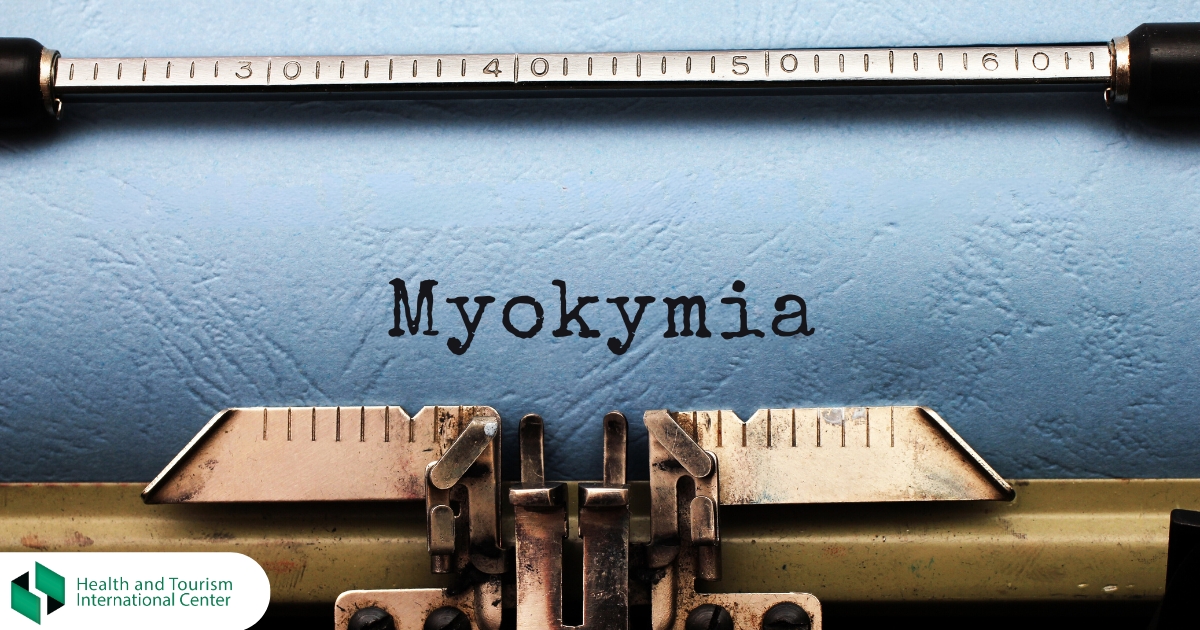What is myokymia?
Myokymia is an involuntary muscle movement that is noticeable on the skin.
Myokymia can occur physiologically in a practically healthy person or in the form of myokymia of the face or limbs. Also common is spasm of the eyelid muscle.
The cause of myokymia is hyperactivation of one or more motor cells. The motor cell controls the contraction of the muscle. The motor cell contains a motor neuron and skeletal muscle fibers.
Myokymia of the eyelid (convulsive contraction of the eyelid) is common in healthy individuals and is caused by:
- Stress;
- Fatigue;
- Caffeine;
- Insomnia.
If myokymia occurs on the face, it usually involves the orbicularis oculi muscle. Rarely, facial myokymia occurs against the background of damage to the facial nerve.
As for limb myokymia, it is always the result of a disease that impairs motor nerve function.
Limb myokymia may be caused by the following disorders:
- Radiculopathy;
- Median neuropathy;
- Multiple sclerosis;
- Guillain-Barré syndrome;
- Uremia;
- Thyrotoxicosis, etc.
Rarely, but in some clinical cases, limb myokymia occurs in healthy individuals after heavy physical exertion, exercise.
Myokymia is an involuntary muscle movement that is noticeable on the skin.
Myokymia can occur physiologically in a practically healthy person or in the form of myokymia of the face or limbs. Also common is spasm of the eyelid muscle.
The cause of myokymia is hyperactivation of one or more motor cells. The motor cell controls the contraction of the muscle. The motor cell contains a motor neuron and skeletal muscle fibers.
Myokymia of the eyelid (convulsive contraction of the eyelid) is common in healthy individuals and is caused by:
- Stress;
- Fatigue;
- Caffeine;
- Insomnia.
If myokymia occurs on the face, it usually involves the orbicularis oculi muscle. Rarely, facial myokymia occurs against the background of damage to the facial nerve.
As for limb myokymia, it is always the result of a disease that impairs motor nerve function.
Limb myokymia may be caused by the following disorders:
- Radiculopathy;
- Median neuropathy;
- Multiple sclerosis;
- Guillain-Barré syndrome;
- Uremia;
- Thyrotoxicosis, etc.
Rarely, but in some clinical cases, limb myokymia occurs in healthy individuals after heavy physical exertion, exercise.
Myokymia is an involuntary muscle movement that is noticeable on the skin.
Myokymia can occur physiologically in a practically healthy person or in the form of myokymia of the face or limbs. Also common is spasm of the eyelid muscle.
The cause of myokymia is hyperactivation of one or more motor cells. The motor cell controls the contraction of the muscle. The motor cell contains a motor neuron and skeletal muscle fibers.
Myokymia of the eyelid (convulsive contraction of the eyelid) is common in healthy individuals and is caused by:
- Stress;
- Fatigue;
- Caffeine;
- Insomnia.
If myokymia occurs on the face, it usually involves the orbicularis oculi muscle. Rarely, facial myokymia occurs against the background of damage to the facial nerve.
As for limb myokymia, it is always the result of a disease that impairs motor nerve function.
Limb myokymia may be caused by the following disorders:
- Radiculopathy;
- Median neuropathy;
- Multiple sclerosis;
- Guillain-Barré syndrome;
- Uremia;
- Thyrotoxicosis, etc.
Rarely, but in some clinical cases, limb myokymia occurs in healthy individuals after heavy physical exertion, exercise.
Source:

